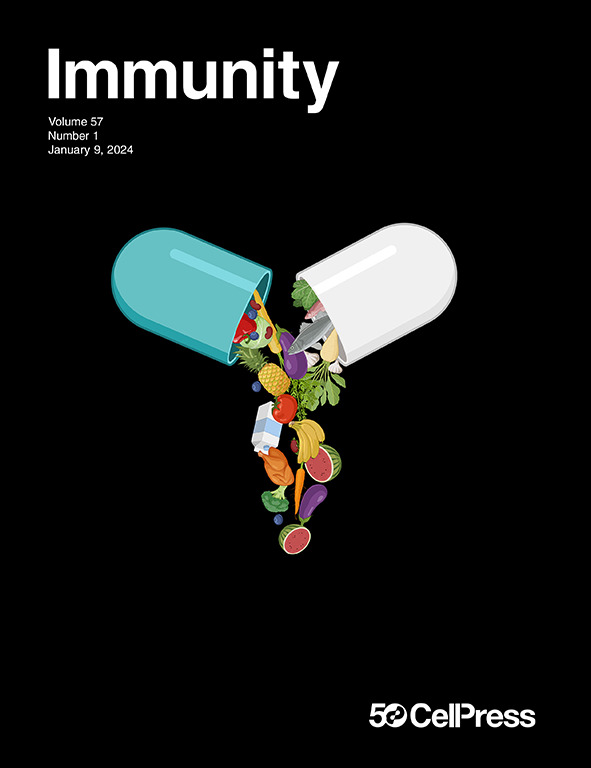Mitochondrial complex IV remodeling in tumor-associated macrophages amplifies interferon signaling and promotes anti-tumor immunity
IF 25.5
1区 医学
Q1 IMMUNOLOGY
引用次数: 0
Abstract
Tumor-associated macrophages (TAMs) influence tumor progression and immune checkpoint blockade (ICB) efficacy. Interferon (IFN)-TAMs predict better survival and ICB responses, yet the mechanisms governing IFN-TAMs remain unclear. Here, we identify NDUFA4, a complex IV subunit of the electron transport chain, as a functional switch controlling TAM function and anti-tumor immunity. NDUFA4 expression sustained pro-tumoral TAMs. However, intratumoral IFNs decreased NDUFA4 expression in TAMs via the cooperative action of NDUFA4L3 and miR-147, co-encoded by a conserved bifunctional transcript. Mechanistically, NDUFA4 repression increased mitochondrial DNA release into the cytoplasm and subsequent STING activation, thereby amplifying anti-tumor IFN-induced transcriptional programs in TAMs. Finally, we designed RNA-based therapeutics that leveraged the specificity of miR-147 for the Ndufa4 transcript to enhance ICB efficacy and inhibit B16 melanoma tumor growth. These findings uncover mitochondrial complex IV remodeling as a critical mechanism governing the functional adaptation of macrophages to distinct microenvironments with broad implications for immunotherapy.

肿瘤相关巨噬细胞线粒体复合体IV重塑放大干扰素信号并促进抗肿瘤免疫
肿瘤相关巨噬细胞(tam)影响肿瘤进展和免疫检查点阻断(ICB)的疗效。干扰素(IFN)-TAMs预测更好的生存和ICB反应,但控制IFN-TAMs的机制尚不清楚。在这里,我们确定了NDUFA4,一个电子传递链的复合物IV亚基,作为控制TAM功能和抗肿瘤免疫的功能开关。NDUFA4表达持续促肿瘤tam。然而,肿瘤内ifn通过NDUFA4L3和miR-147的协同作用降低了TAMs中NDUFA4的表达,miR-147由保守的双功能转录物共同编码。从机制上讲,NDUFA4抑制增加了线粒体DNA释放到细胞质和随后的STING激活,从而放大了tam中抗肿瘤ifn诱导的转录程序。最后,我们设计了基于rna的治疗方法,利用miR-147对Ndufa4转录物的特异性来增强ICB疗效并抑制B16黑色素瘤肿瘤生长。这些发现揭示了线粒体复合体IV重塑是巨噬细胞对不同微环境的功能适应的关键机制,对免疫治疗具有广泛的意义。
本文章由计算机程序翻译,如有差异,请以英文原文为准。
求助全文
约1分钟内获得全文
求助全文
来源期刊

Immunity
医学-免疫学
CiteScore
49.40
自引率
2.20%
发文量
205
审稿时长
6 months
期刊介绍:
Immunity is a publication that focuses on publishing significant advancements in research related to immunology. We encourage the submission of studies that offer groundbreaking immunological discoveries, whether at the molecular, cellular, or whole organism level. Topics of interest encompass a wide range, such as cancer, infectious diseases, neuroimmunology, autoimmune diseases, allergies, mucosal immunity, metabolic diseases, and homeostasis.
 求助内容:
求助内容: 应助结果提醒方式:
应助结果提醒方式:


